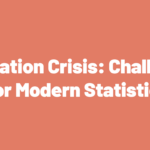With digital tracking breaking and marketers losing visibility, many are turning to Marketing Mix Modeling (MMM) as an alternative measurement method to multi-touch attribution.
And understandably so: it doesn’t rely on tracking people across the Internet, it focuses on finding true incrementality, and it can be very valuable for budget allocation, planning, and forecasting.
However, it’s crucial to recognize that MMM isn’t a universal solution, and its success hinges on several factors unique to each organization. As an MMM vendor, we sometimes have to turn companies away because MMM isn’t a fit for them (yet).
If you’re considering MMM but don’t know if you’re ready for it, here are the indicators that can help you get some clarity.
II. Key Indicators That Your Company Might Not Be Ready for MMM
- Limited Channel Mix:
A primary consideration is the number of marketing channels you operate in. If your company’s marketing strategy is concentrated in just one or two channels, in-platform reporting and lift tests might be enough and you don’t need to overcomplicate your measurement strategy just yet.
Also, MMM’s strength comes from analyzing and interpreting interactions and synergies across a broad spectrum of channels. With a limited channel mix, these interactions are minimal, and the potential insights that MMM can yield are constrained.
For example, if your company invests predominantly in paid social, say 90% of your budget on Meta, the scope for MMM to offer meaningful optimization strategies is limited. The model works best when it can analyze how different channels complement and influence each other, leading to more informed strategic decisions.
- Low Volume of Marketing Spend
The scale of your marketing budget is another critical factor to consider. While MMM can be applied to any size of marketing budget, its true value is shown with larger budgets.
With less spend than $5M per year, it’s just hard to make the project successful given how complicated MMM is and how easy it is to get wrong.
The rationale behind this is rooted in the economics of scale and the diminishing returns of MMM at lower spend levels. The insights derived from MMM are most actionable and impactful when they can be applied across a broad range of marketing activities and investments. For smaller budgets, the granularity and sophistication of MMM might result in insights that are less significant or actionable given the limited scope of activities.
- Lack of Organizational Willingness to Act on MMM Insights
An often overlooked indicator is the willingness of your organization to act on the insights provided by MMM. Believe it or not, it’s not uncommon for companies to do MMM, get some valuable insights, and be unable or unwilling to implement the recommended changes.
Whether it’s because of organizational inertia, resistance to change, or a lack of alignment between different departments, this happens more often than it should.
MMM is not just an analytical exercise; it is a tool for strategic decision-making. The insights it provides are only as valuable as the actions it inspires.
If your marketing team is not equipped or prepared to pivot strategies, reallocate budgets, or experiment with new channels based on MMM insights, then the exercise becomes an academic one rather than a transformative business initiative.
The readiness to act on MMM insights also extends to the higher echelons of company leadership. Executive buy-in is crucial for the successful implementation of changes suggested by MMM, and it’s really hard to move things forward without it.
III. Building Foundations Before MMM Adoption
If you read the list above and realized that your organization might not be ready to implement MMM just yet, that’s okay! You can focus on building the foundation to help you prepare for it once you’re ready. Here are a few things we recommend you do to lay the groundwork:
- Focus on incrementality and experimentation
The concept of incrementality – understanding the additional value created by specific marketing activities – is the cornerstone of MMM. You need to align your marketing team and your finance team around this concept – they should know what it is, why it is so important, and the different ways to measure it.
After $100k+ / month in paid media budget, it’s a good time to start thinking about building your “testing muscle”. Geo-lift and holdout experiments are great ways to start answering the incrementality question, and they’re easier to implement than MMM.
Experimentation should become a part of your marketing DNA. It’s not about running a test once in a blue moon; it’s about continuously challenging assumptions and validating strategies. As your organization becomes more comfortable with this approach, the transition to MMM will feel like a natural progression rather than a disruptive shift.
Cultivating a culture that embraces data-driven decision-making requires more than just implementing the right tools and technologies. It involves nurturing an environment where experimentation is encouraged, where failures are seen as learning opportunities, and where data is valued as a critical asset in strategic planning.
- Educating the Team on Marketing Mix Modeling
A fundamental step in preparing for MMM is educating your team about its principles and applications. This involves not only training in the technical aspects of MMM but also in its strategic implications. Your marketing and analytics teams need to understand how to interpret MMM outputs and translate them into actionable marketing strategies. Consider hosting workshops, seminars, or even bringing in external experts to facilitate this learning process.
If you’re just getting started on this, we’ve built an MMM template to help you pitch the idea internally – feel free to copy it and steal it.
IV. When to Consider Making the Leap to MMM: TDLR
Adding MMM to your measurement mix is a big decision. MMM is hard and it needs to be done well, but it can have a deep impact on your company’s growth. To summarize, most companies are ready when…
- Your annual marketing spend reaches or surpasses the $5-10 million mark
- You have a diversified marketing channel mix with multiple channels (online and/or offline)
- Your team is bought in and has a culture of data-driven decision-making, testing, and emphasis on incrementality.



